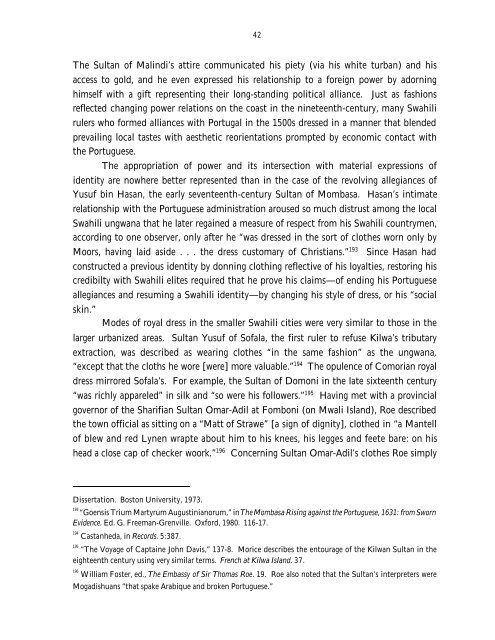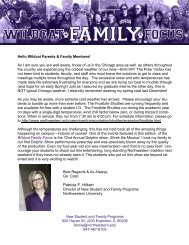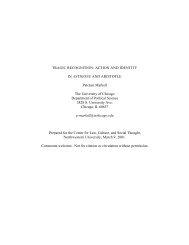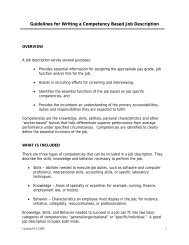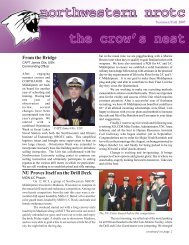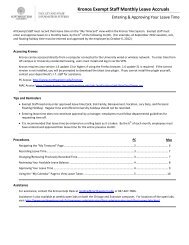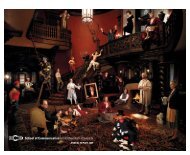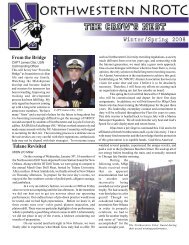Artistry Permits and Custom May Ordain - Northwestern University
Artistry Permits and Custom May Ordain - Northwestern University
Artistry Permits and Custom May Ordain - Northwestern University
Create successful ePaper yourself
Turn your PDF publications into a flip-book with our unique Google optimized e-Paper software.
Dissertation. Boston <strong>University</strong>, 1973.<br />
42<br />
The Sultan of Malindi’s attire communicated his piety (via his white turban) <strong>and</strong> his<br />
access to gold, <strong>and</strong> he even expressed his relationship to a foreign power by adorning<br />
himself with a gift representing their long-st<strong>and</strong>ing political alliance. Just as fashions<br />
reflected changing power relations on the coast in the nineteenth-century, many Swahili<br />
rulers who formed alliances with Portugal in the 1500s dressed in a manner that blended<br />
prevailing local tastes with aesthetic reorientations prompted by economic contact with<br />
the Portuguese.<br />
The appropriation of power <strong>and</strong> its intersection with material expressions of<br />
identity are nowhere better represented than in the case of the revolving allegiances of<br />
Yusuf bin Hasan, the early seventeenth-century Sultan of Mombasa. Hasan’s intimate<br />
relationship with the Portuguese administration aroused so much distrust among the local<br />
Swahili ungwana that he later regained a measure of respect from his Swahili countrymen,<br />
according to one observer, only after he “was dressed in the sort of clothes worn only by<br />
Moors, having laid aside . . . the dress customary of Christians.” 193 Since Hasan had<br />
constructed a previous identity by donning clothing reflective of his loyalties, restoring his<br />
credibilty with Swahili elites required that he prove his claims—of ending his Portuguese<br />
allegiances <strong>and</strong> resuming a Swahili identity—by changing his style of dress, or his “social<br />
skin.”<br />
Modes of royal dress in the smaller Swahili cities were very similar to those in the<br />
larger urbanized areas. Sultan Yusuf of Sofala, the first ruler to refuse Kilwa’s tributary<br />
extraction, was described as wearing clothes “in the same fashion” as the ungwana,<br />
“except that the cloths he wore [were] more valuable.” 194 The opulence of Comorian royal<br />
dress mirrored Sofala’s. For example, the Sultan of Domoni in the late sixteenth century<br />
“was richly appareled” in silk <strong>and</strong> “so were his followers.” 195 Having met with a provincial<br />
governor of the Sharifian Sultan Omar-Adil at Fomboni (on Mwali Isl<strong>and</strong>), Roe described<br />
the town official as sitting on a “Matt of Strawe” [a sign of dignity], clothed in “a Mantell<br />
of blew <strong>and</strong> red Lynen wrapte about him to his knees, his legges <strong>and</strong> feete bare: on his<br />
head a close cap of checker woork.” 196 Concerning Sultan Omar-Adil’s clothes Roe simply<br />
193 “Goensis Trium Martyrum Augustinianorum,” in The Mombasa Rising against the Portuguese, 1631: from Sworn<br />
Evidence. Ed. G. Freeman-Grenville. Oxford, 1980. 116-17.<br />
194 Castanheda, in Records. 5:387.<br />
195 “The Voyage of Captaine John Davis,” 137-8. Morice describes the entourage of the Kilwan Sultan in the<br />
eighteenth century using very similar terms. French at Kilwa Isl<strong>and</strong>. 37.<br />
196 William Foster, ed., The Embassy of Sir Thomas Roe. 19. Roe also noted that the Sultan’s interpreters were<br />
Mogadishuans “that spake Arabique <strong>and</strong> broken Portuguese.”


